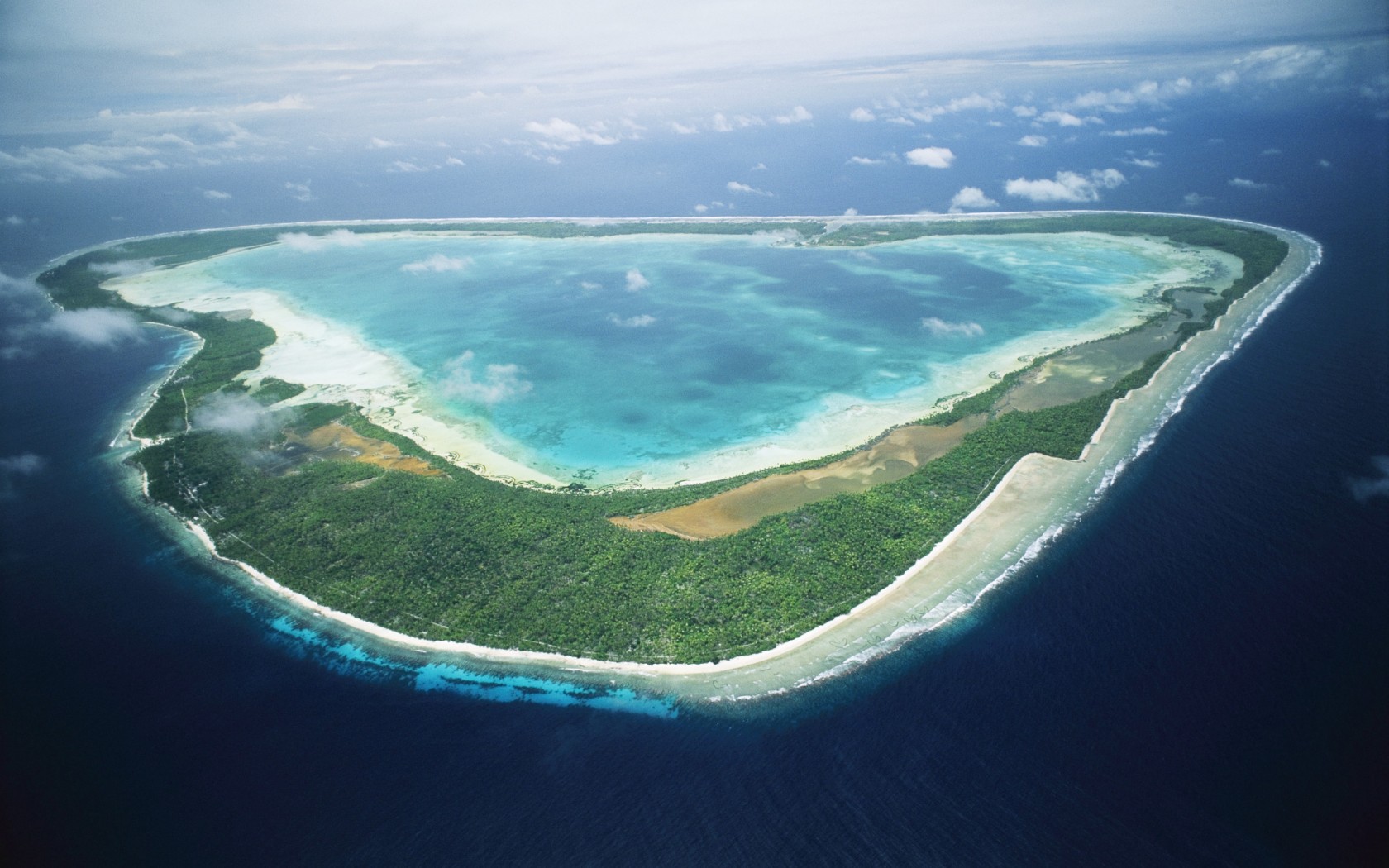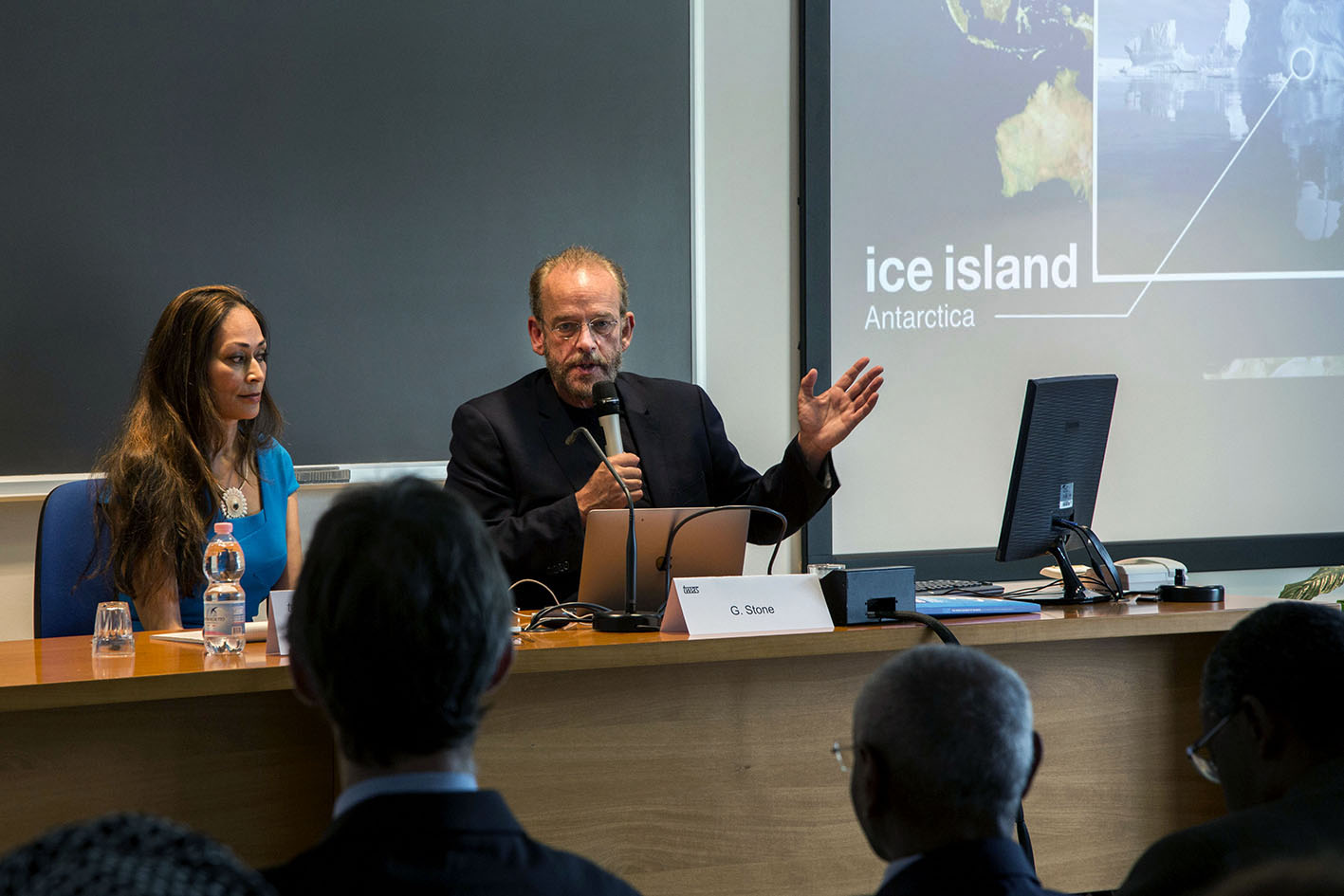 The Republic of Kiribati is currently facing one of the cruelest realities imaginable. Within 100 years the rising oceans will swallow up the islands that comprise all of its land, leaving its 110,000 citizens without a land to call home. And now they are, as a people, engaged in a fight for survival.
The Republic of Kiribati is currently facing one of the cruelest realities imaginable. Within 100 years the rising oceans will swallow up the islands that comprise all of its land, leaving its 110,000 citizens without a land to call home. And now they are, as a people, engaged in a fight for survival.
Kiribati (pronounced KEER-ih-bahss) is a mid-Pacific nation of 34 islands, mostly ring-shaped islands called atolls, with most of them no more than a few feet above sea level. The islands are scattered across some 4,800 kilometres (3000 miles) from west to east, extending into all four hemispheres. It provides the world with roughly 60% of its tuna and is home to the Phoenix Islands Protected Area, the second biggest oceanic preserve in the world.
It is a beautiful nation, with a wealth of natural and cultural resources – and climate change now poses an immediate existential threat. “This country is going to be the first of one or two countries that’s going to be underwater because of sea-level rise,” says Greg Stone, chief scientist and executive vice president at Conservation International as well as science adviser to the government of Kiribati. “To me it’s one of the most important moral issues of our time.”
The injustice of it all is that Kiribati did nothing to cause this problem. It was largely the industrial nations of the world that filled the atmosphere with carbon, and those same nations throughout the world that have the most power and resources to help the Kiribati, but are typically the most reluctant. In a keynote presentation at the AAAS-TWAS Summer Course in Science Diplomacy, Stone and Christine Greene, Kiribati's honorary counsel to the United States, explored how science diplomacy could help to bring a consensus that the world has an interest – and an obligation – to help protect the remote and far-flung island nation.
The science diplomacy course is the fourth organised by the American Association for the Advancement of Science (AAAS) and TWAS at the Abdus Salam International Centre for Theoretical Physics campus in Trieste, Italy. Held 21-25 August, it convened 45 scientists and government officials from 18 countries including Egypt, Indonesia, Italy, Nepal and Sri Lanka. They were welcomed by a three top officials: Mahlet Mesfin, deputy director of the AAAS Center for Science Diplomacy; Mohamed Hassan, interim executive director of TWAS; and Romain Murenzi, director of the UNESCO Natural Science Sector Division of Science Policy and Capacity Building.
![[Map: Wikimedia Commons]](/sites/default/files/inline-images/kiribati_map.gif) During the week-long course, participants will probe the complex workings and potential value of science diplomacy for addressing global challenges and improving relations among nations.
During the week-long course, participants will probe the complex workings and potential value of science diplomacy for addressing global challenges and improving relations among nations.
Stone, a marine scientist, made helping the Kiribati people a personal mission after visiting there for the first time in 2000. Already, he said, hundreds of homes there have been washed away – and sea levels continue to rise. “It really is like burning your neighbor’s house down by accident, and the next morning you see them out on the street with their bags and you say, ‘Oh, that’s too bad. What are you going to do now?’” said Stone. “That’s been the response of the international community.”
So far, the only nation that has shown a willingness to take in future refugees is Fiji, another developing nation with challenges of its own. And since the disappearance of Kiribati’s islands appears to be inevitable, those who wish help have to think of alternative ways to save its people and preserve its culture. Should they build artificial platforms where the islands used to be? There are some ideas to use local sand and concrete to create floating artificial islands where people could live, but that is very preliminary. Facebook is also already very popular among its inhabitants. If the people are dispersed, could the culture perhaps live on through social media?
Since many if not all of Kiribati’s inhabitants would eventually be displaced, Greene said one major focus is educating the people so that they are more likely to be welcome in parts of the world hesitant to bring immigrants in. And, she said, improved technology is urgently needed for that goal.

“Those are our biggest challenges really,” she said. “To educate ourselves to be ready for employment in the outside world so that we’re not refugees. There’s a big effort to educate the entire nation and get them work-ready. And we can do that.”
Even then, since the Kiribati people are likely to find themselves all over the world, maintaining the history of a culture that functions mainly through collective, collaborative storytelling will be difficult. That’s where social media comes into play.
“Our education needs have to be met outside of the country, so what’s really important in maintaining the culture is the transfer of knowledge from grandparent to grandchild,” Greene said. “Social media is the only way we have of staying together. I left 20 years ago to get an education and never went back. In that time I’ve had maybe 200 to 300 nieces and nephews I would not know if I did not have Facebook.”
See Greg Stone's TED talk on the challenges that Kiribati is confronting.
Solutions will have to be determined within years, since the danger to the island people is immediate. Already, the region is enduring stronger and more frequent storms. Stone and Greene argue that the islands will be rendered unlivable in 20 to 30 years due to constant flooding from storm surges and fresh water sources that are inundated by saltwater. Modelers predict that, possibly by the end of the century, the sea level will rise a meter due to the thermal expansion of the oceans and melting ice, enough to submerge the whole nation.
How can the world respond? Greene, Stone and their organization Pacific Rising are advocating something similar to the Marshall Plan, under which the United States made a significant investment to rebuild the countries of Western Europe after World War II. Such an initiative could be developed to support Kiribati and other nations whose very existence is threatened. But that’s only possible if the nations of the world find the political and moral will to make that investment, and with instability and conflict plaguing much of the globe, Kiribati has gotten little notice from those with the power and resources to help.
Still, science and environmental conservation provide hope. The foundation of the Phoenix Islands Protected Area and its accompanying oceanic research provided a way to capture the world’s attention, for example. That began when Stone, after receiving a permit to study the Kiribati waters, went back to Kiribati with his findings to show them his data on the reefs and wildlife in the water and how important it was ecologically.
Normally, Greene said, scientists would come, finish their research, and never return. But Stone’s willingness to share his findings with the people of the islands led to action from the Kiribati people to apply for a global treaty to protect a large area of ocean that surrounds the islands. They were successful. Today, fishing or interference with the flourishing underwater wildlife is prohibited in the protected area, which has over 400,000 square kilometres of ocean.
Nations such as Italy have made important contributions to support the protected area, they said. This protected area helps to support healthy fish stocks in the region, with benefits that extend far beyond the region. The people of Kiribati hope that by giving this gift to the rest of the world, someday the rest of the world will return the favour and help them in their time of need.
“This has become the most important act in the history of marine conservation, given to the world by one of the poorest countries in the world,” said Stone. “That says a lot to me, that leadership in this area was shown at that level.”
Sean Treacy

